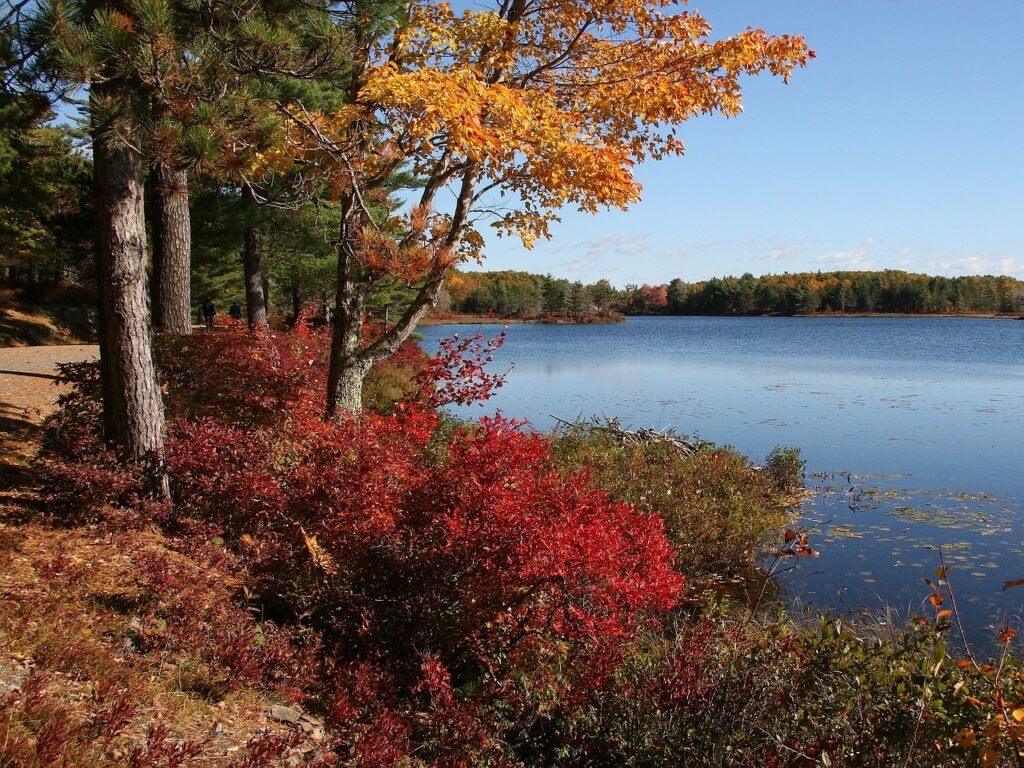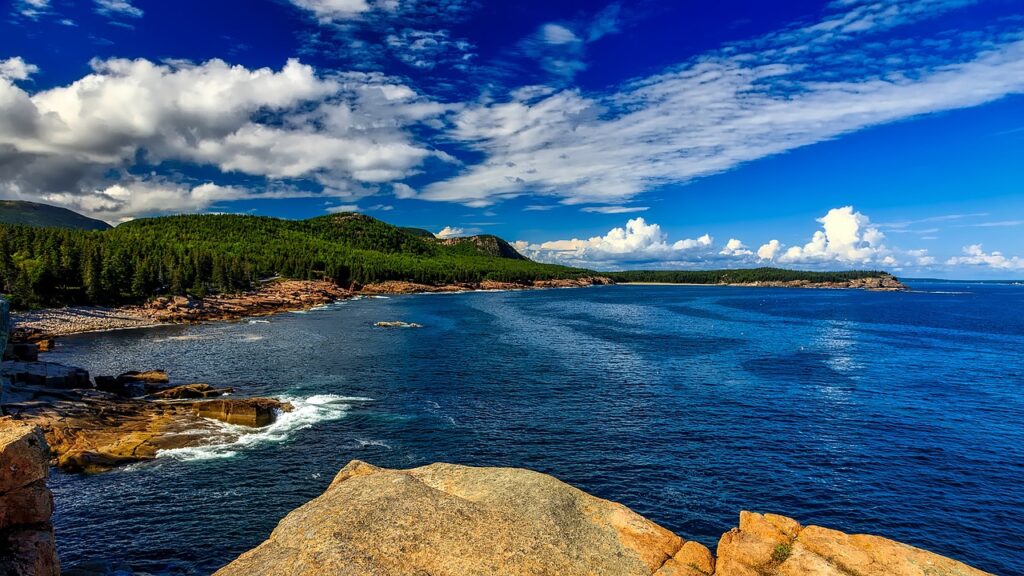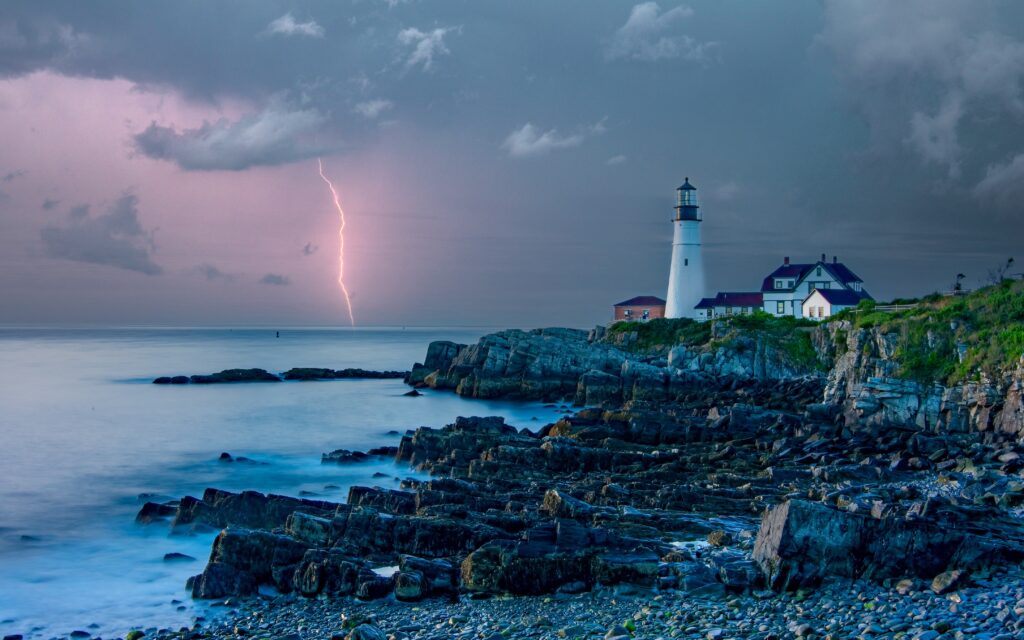Maine
The Comprehensive Guide to Maine: New England’s Easternmost State
Maine, located in the northeastern United States, is renowned for its rugged beauty, distinct culture, and rich history. This guide delves into the heart of Maine, exploring its geography, demographics, economy, and much more.
Geography of Maine
Maine is the easternmost state in the United States, nestled in the New England region. It shares borders with New Hampshire to the west and the Canadian provinces of New Brunswick and Quebec to the northeast and northwest, respectively.
Unique Geographic Features
This New England State stands out for its varied geographical features, including its jagged Atlantic Ocean coastline, smooth mountains, heavily forested interiors, and picturesque waterways. It also boasts a rich biodiversity, with wild lowbush blueberries and an abundance of seafood, especially lobster and clams.
The state’s northeastern location among the contiguous United States, its northernmost position east of the Great Lakes, and the fact that it borders only one other U.S. state make it unique. The state’s most populous city is Portland, while Augusta serves as the capital.
History of Maine’s Territory
Maine’s territory has been inhabited by aboriginal populations for thousands of years, long before the arrival of Europeans. Several Algonquian-speaking nations governed the area, known today as the Wabanaki Confederacy.
The first European settlement was established by the French in 1604 on Saint Croix Island, followed by the English settlement, the Popham Colony, in 1607. Maine witnessed numerous European settlements in the 1620s, but many failed due to the harsh climate and conflicts with local Indigenous people.

Maine’s Historical Journey
Maine’s journey from the 18th century to becoming the 23rd state of the Union in 1820 under the Missouri Compromise is a significant part of its history. The state experienced several severe defeats, particularly during Dummer’s War, which significantly reduced the population of its indigenous inhabitants.
Statehood and Missouri Compromise
Maine’s official entry into the Union was as part of the Missouri Compromise, which aimed to maintain the balance between slave and free states. The state’s original capital was Portland, Maine’s largest city, but it was moved to the more central Augusta in 1832.
The Industrial Revolution and Beyond
Maine’s industrial outputs include paper, lumber and wood products, electronic equipment, leather products, food products, textiles, and biotechnology. The state also saw significant developments in naval shipbuilding and construction during the industrial revolution.
Demographics of Maine
Maine’s demographics reflect a mix of historical and contemporary influences. With a population of over 1.3 million, Maine is the least densely populated state east of the Mississippi River. It is also the most rural state in the U.S., with only 38.7% of the state’s population living within urban areas.
Language and Ethnicity
English is the dominant language spoken in Maine, followed by French. Maine has the highest percentage of French Americans of any U.S. state, most of them of Canadian origin. The state also has a significant population of English, Irish, German, and American ancestry.
Maine’s Economy
Maine’s economy is diverse, with significant contributions from various sectors. The state’s largest industries include agriculture, forestry, fishing, and manufacturing. Tourism and outdoor recreation also play a vital role in Maine’s economy, attracting millions of visitors each year.
Agriculture and Seafood
Agriculture remains a key economic activity in Maine, with the state producing dairy products, eggs, poultry, wild blueberries, and apples. Maine is also the largest producer of low-bush blueberries in the U.S.
Maine’s seafood industry, particularly lobster fishing, is a major contributor to the state’s economy. The state also produces large quantities of herring and shellfish, making it a major player in the country’s seafood industry.
Manufacturing and Other Industries
Manufacturing in Maine primarily includes paper, lumber and wood products, and electronic equipment. The state also has a growing biotechnology sector and a significant leather products industry.
The state has been successful in attracting tourists with its natural beauty and outdoor recreational activities, such as hunting, fishing, skiing, boating, and camping. This has led to a surge in the state’s hospitality and retail sectors.
Law and Government in Maine
Maine’s government is divided into three branches: the executive, legislative, and judicial branches. The state also has a number of constitutional and statutory officers.
Executive Branch
The executive branch is led by the Governor of Maine. The state constitution limits governors to two consecutive terms in office. The state does not have a lieutenant governor, making it one of only seven states with this arrangement.
Legislative Branch
The Maine Legislature is a bicameral body consisting of the Maine House of Representatives and the Maine Senate. The Legislature is responsible for making and passing laws.
Judicial Branch
The highest court in Maine is the Maine Supreme Judicial Court. Other courts in the state include the District Court, Superior Court, and Probate Court.
Education in Maine
Maine boasts a robust education system, with numerous institutions of higher learning, including the University of Maine, the state’s oldest and largest university. The state also has several private elementary schools and many public schools.
The state spends significantly on per-student public expenditure for elementary and secondary schools and has numerous vocational schools that teach trades such as welding, construction, and vehicle repair.

Culture of Maine
Maine’s culture reflects its history, geography, and the diversity of its people. From its agricultural roots to its thriving arts scene, Maine offers a unique cultural experience.
Food Scene
Maine’s food scene is diverse and vibrant, with numerous restaurants and food festivals throughout the state. The state is known for its seafood, particularly lobsters and clams, as well as wild blueberries and maple syrup.
Sports in Maine
Sports are vibrant in the state, with a strong focus on outdoor sports like hunting, fishing, and skiing. The state is also home to several professional and college sports teams.
The state of Maine offers a unique blend of natural beauty, rich history, diverse culture, and strong community spirit. Whether you’re a history buff, nature lover, foodie, or sports enthusiast, Maine has something to offer everyone. In the words of the state’s motto, it truly is “the way life should be”.
